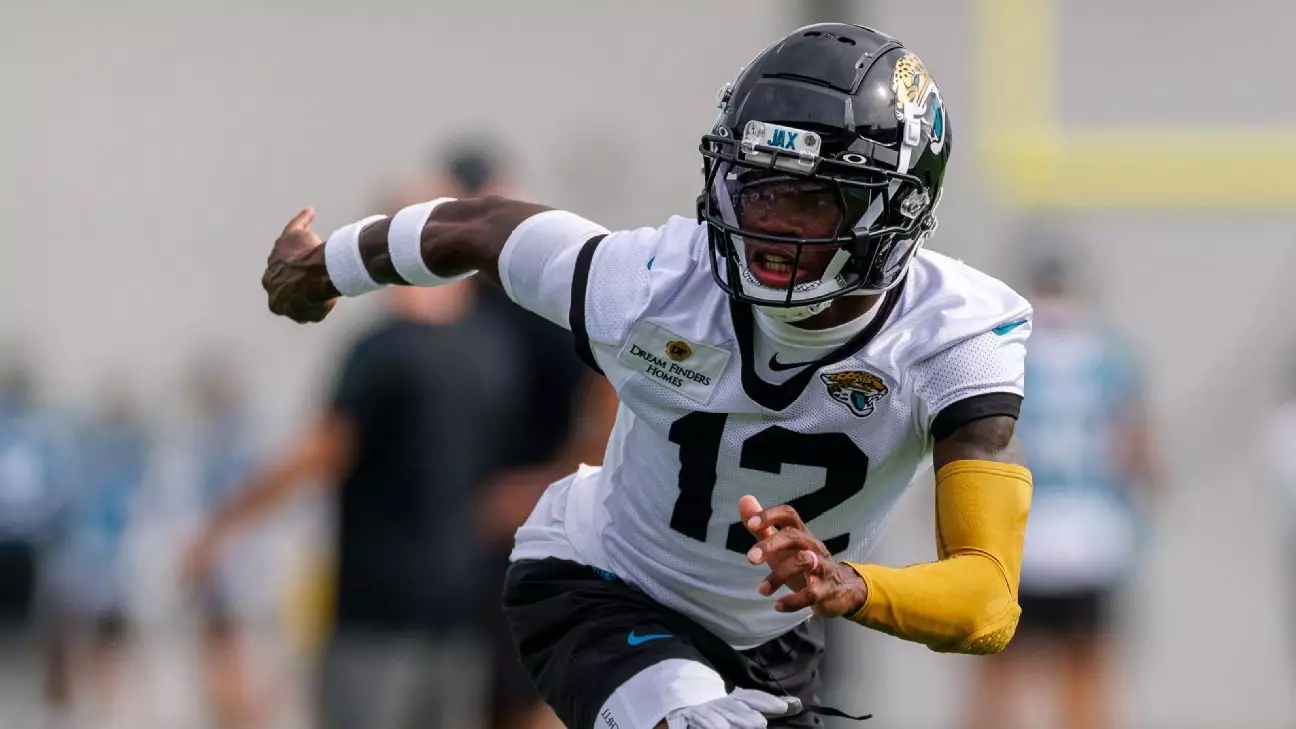In recent years, the idea of a player excelling simultaneously on offense and defense has transitioned from a relic of the past to a bold, experimental frontier in the NFL. The Jacksonville Jaguars’ pursuit of Travis Hunter as a potential modern-day two-way player embodies this audacious vision. However, beneath the surface of this innovative endeavor lies an unsettling reality: the immense pressure it places on athletes and the questionable strategic value it offers in the long run. While proponents hail it as a game-changing approach, a more critical examination reveals that this pursuit risks undermining player development, safety, and team stability.
The allure of historical greatness—Chuck Bednarik’s legendary status—continues to cast a long shadow, enticing teams to revive the romance of the two-way player. Yet, modern football has evolved dramatically. The game’s complexity, physical toll, and specialization demand that athletes dedicate their focus narrowly to optimize performance. Expecting a rookie like Hunter to process two distinct playbooks and responsibilities is both idealistic and potentially dangerous. It veers dangerously close to prioritizing spectacle over sound player management, risking burnout and injuries that could prematurely curtail promising careers.
Moreover, the strategy of rotating players between offense and defense during practice does little to address the fundamental issue: it overtaxes the athlete’s mental and physical capacity. Hunter’s coach acknowledges this by emphasizing a gradual transition, but the pressure to adapt quickly and perform on two fronts is inherently flawed. The risk of cognitive overload—confusing terminologies, plays, and responsibilities—can lead to lapses in execution at crucial moments. It’s a perilous gamble to assume that a player’s mental resilience can withstand a workload that arguably was best suited for a bygone era when players often had more well-rounded, raw athleticism without the same strategic complexity we see today.
The Pragmatism of Player Development Versus Romantic Ideals
Is this sprint toward a two-way career strategy genuinely about maximizing player talent or about media spectacle and organizational bravado? The answer leans heavily toward the latter. The NFL’s landscape is littered with promising players who, overwhelmed by the multifaceted demands, faltered early in their careers. Hunter’s case exemplifies this dilemma: he has shown admirable composure so far, but the question remains whether he can sustain this mental stamina over an entire season.
From a developmental perspective, specialization remains the safest and most effective path for athletes at the professional level. Young players must choose their directions early and dedicate themselves to mastering that craft. The notion of flipping between roles during a season or even a training camp undermines this process profoundly. It creates a scenario where players are perpetually in a state of transition, never truly able to settle into a role that could develop into mastery, risking the formation of superficial competence rather than expertise.
Furthermore, teams risking their resources—both human and tactical—on such experiments may prove costly in critical moments. The distraction of juggling multiple responsibilities can subtly erode team cohesion and strategic clarity. What happens when the player is unable to meet expectations on either side? Will coaches double down or abandon the experiment? Either outcome risks destabilizing the roster and wasting the young athlete’s potential.
The Ethical and Safety Dilemmas of Multifaceted Play
Beyond development concerns lies a stark safety issue. Football is an inherently violent sport where injuries are an unfortunate reality. Player health should always be paramount, yet the pursuit of novelty often pushes safety considerations to the periphery. Rushing a player into roles demanding high physical output and quick mental switches increases the likelihood of both acute injuries and long-term health issues.
For Hunter, the physical toll of playing multiple roles isn’t just an abstract concern; it’s a real threat that could prematurely end or hinder his career. The NFL’s evolving approach to player safety emphasizes specialization and recovery, yet this ambitious two-way experiment runs counter to those principles. If athletes are expected to perform at high levels on both sides of the ball, the cumulative fatigue could outweigh any strategic advantage.
Additionally, this relentless push for versatility risks fostering a culture that devalues specialization, a cornerstone of modern strategic football. Instead of cultivating elite players in their core positions, teams might be tempted to gamble on “jack-of-all-trades” athletes, with potentially disastrous consequences for competitive integrity and player longevity.
The NFL’s flirtation with dual-role players like Travis Hunter exposes a fundamental tension between innovation and prudence. While such experiments might generate superficial excitement, they threaten to undermine the very foundation of successful player development and team stability. Football is becoming increasingly specialized—an evolution rooted in safety, strategy, and the recognition of human limits. Reckless push toward Revivalist ideals of two-way stardom disregards these realities.
Instead of glamorizing a return to the past, the sport should focus on refining player roles within modern frameworks—protecting athletes and enhancing performance. The risk of overextending young talent in pursuit of media-worthy headlines is a shortcut that could evolve into a long-term liability. If the NFL genuinely values its players’ well-being and the integrity of the game, it must resist the temptation to romanticize two-way players and instead champion depth, specialization, and strategic clarity. Anything less is a reckless gamble with potentially disastrous consequences for the sport’s future.


Leave a Reply